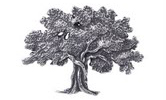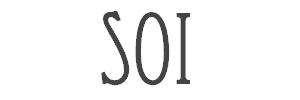
|
|||||||||||
|
|
|
|
|||||||||
KhácHãy đi “xem” Hồng Ngọc và Thảo Nguyên giải thích về “Hư cấu đúng”‘Xưởng thí nghiệm Sàn Art’, là cái gì vậy? Đây là một chương trình lưu trú nghệ thuật được tổ chức thành các phiên dài 6 tháng. Nghệ sĩ trẻ Việt Nam nộp đơn tham gia thông qua các kỳ đăng ký mở rộng và được lựa chọn bởi một hội đồng cố vấn liên […] Ý kiến - Thảo luận
13:52
Wednesday,27.11.2013
Đăng bởi: Phúc BồNhất chị Quỳnh Anh đấy, ai lại ngược đời thế này, chị ấy định nghĩa thế này: "(Ngọc Nâu uses) fictionality – the process of fabricating fact in order to distract our acceptance of reality and thus our perception of the sciences"
8:15
Wednesday,27.11.2013
Đăng bởi: Nghiêm ToànSợ quá, đọc xong lời giới thiệu bằng tiếng Anh mà mồ hôi toát ra đầm đìa như tắm, thất khiếu kinh động, lông tóc dựng ngược. Thật là thông kim bác cổ, nhân tài xưa nay hiếm thấy.
7:19
Wednesday,27.11.2013
Đăng bởi: Half Tây half taRồi, tìm ra định nghĩa của “Hư cấu đúng” do em Arlette Quynh-Anh Tran (Việt chính gốc, tên Tây thôi) viết. Không có tiếng Việt đâu, các chú chịu khó đọc cho nó mở mang cả tiếng Anh cả kiến thức nhé không lại cãi nhau nổ trời mà không biết bám vào đâu. Ngọc Nâu trong bài này là Hồng Ngọc nha quý vị.
22:50
Tuesday,26.11.2013
Đăng bởi: Nghiêm ToànKhông hiểu có phải mình dùng từ "cây thế" làm bạn Nice Bonsai bực mình hay không mà nóng nẩy quá :D, ai lại nặng lời thế, để cho sàn Art và các bạn vào giải thích đã chứ :D.
22:50
Tuesday,26.11.2013
Đăng bởi: Phúc BồNếu nói "Hư cấu đúng" thì tức là theo hai bạn này, bản chất hư cấu là phải "sai"?
22:42
Tuesday,26.11.2013
Đăng bởi: SiêuNoobPhải chăng hai bạn này đang nói đến The Paradox of Fiction? Còn Right Fiction thì đúng là nghe cứ chan chát.
22:40
Tuesday,26.11.2013
Đăng bởi: Phúc BồHồng Ngọc này có phải là tác giả của "Bếp gia đình" không?
22:36
Tuesday,26.11.2013
Đăng bởi: Nice Bonsai"Phi vặn vẹo bất thành 'có Tây'"
22:26
Tuesday,26.11.2013
Đăng bởi: Nghiêm ToànMình không hiểu tại sao các bạn lại phải dùng chữ nghĩa vặn vẹo như "cây thế" đến khổ. "Hư cấu đúng" không tạo cảm giác tò mò mà thực sự là khó chịu. |
|
||||||||||

